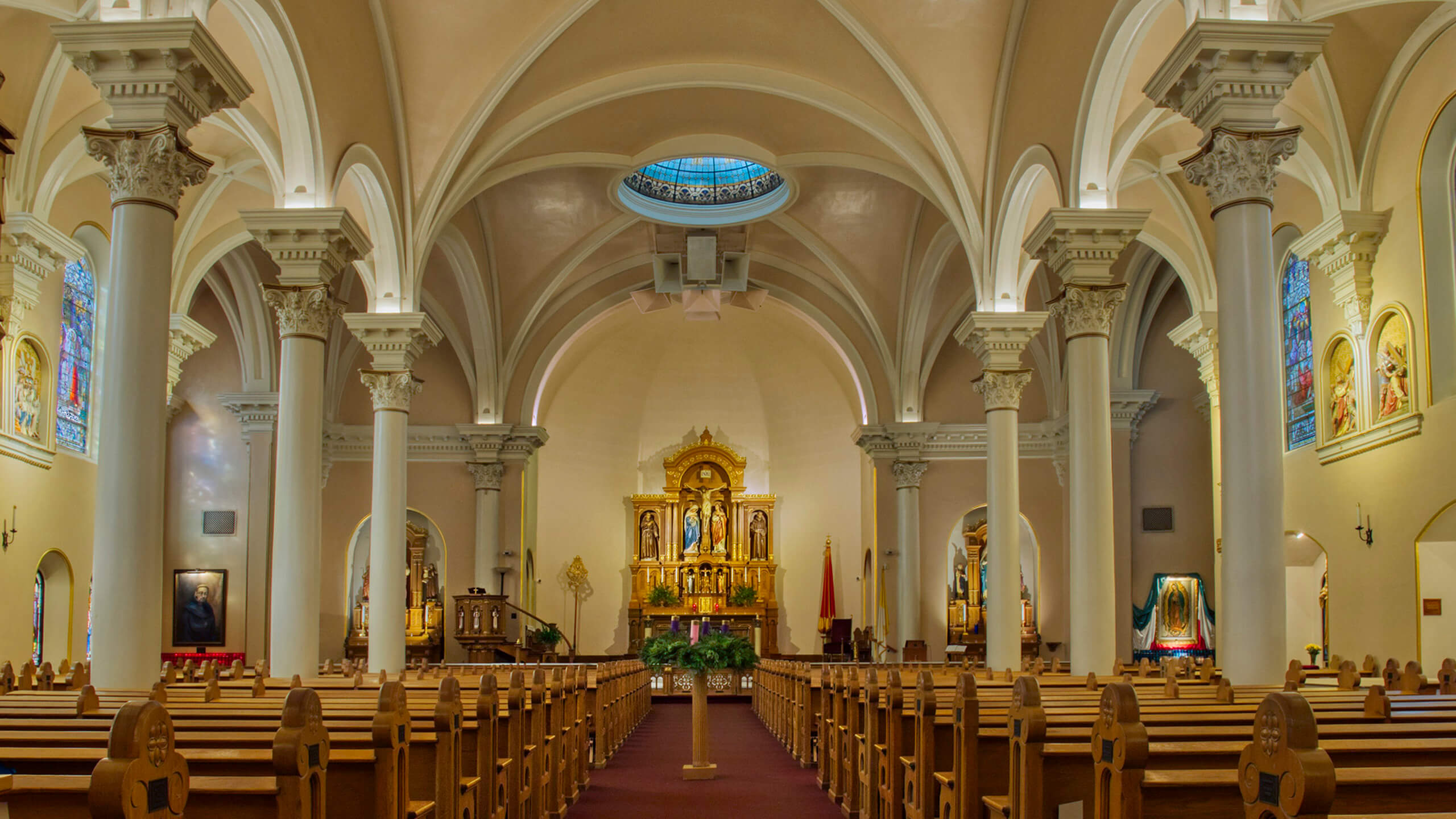Panoramas and vertoramas, the vertical version of a panorama, can show your world in a creative way.
Many times, a panorama or vertorama tells the best story of your scene. Better results can be found using a couple things I’ll share in this article and another to follow. The image above is a section from a vertorama of St. Mary’s Basilica in Phoenix. It’s hard to illustrate vertical stories with a horizontal box.
Light entry point
Let’s talk about why your panorama software might not render your stitching of images quite the way you would like. Hold your thumb out in front of your face with your arm extended. Close one eye. Then, close the other eye and your thumb appears to jump from one position to another even though you know it hasn’t moved. What’s happening is the angle of view from one eye to the other changes the background that is visible, giving the appearance of movement.
When your camera does this, blending images together becomes very difficult and weird things happen. This is more apparent when you have something that is relatively close to the camera. When the pivot point is not over the alight entry point. If the panorama or vertorama subject is further away and you have nothing in the foreground your software has less of a problem with the stitching which is why you can get away with it sometimes and not others.

Panorama kits
There are specific panorama heads for getting your camera. You can spend from just under a hundred bucks to well over $700. What’s the difference? Quality, tolerances and accuracy.

The question you need to ask yourself is, “How much am I going to produce this type of work?” If it’s a LOT and you need super accuracy, then you’ll want to spend the higher dollar amount and buy higher quality materials. If you are willing to work a little harder and McGyver your way to a result, then you’ve come to the right article.

Thrifty person’s panorama kit
If you are working with a wide-angle lens you can get away with a few bits and pieces:
(2) A 5.3 inch quick release plate, $13.95;
(4) Arca Swiss clamp $19.95;
(3) Arca Swiss ‘L’ bracket, $19.95;
If you don’t have a (1) Platyball head you may need one more piece with which to rotate your camera;
Panorama Base $17.95 (not pictured);
(5) An optional piece of kit is a quick release system for divesting yourself of your camera strap when mounting the camera on a tripod. I use Peak Design straps.

Put it together
Take the clamp and mount it on the plate. You may need a trip to the hardware store for a slightly shorter countersunk Allen key screw. Mount the L-bracket on your camera. This allows you to shoot in either the horizontal or vertical orientation. If you don’t use the Platyball, add the panorama base for ability to rotate the camera.
Put it to use
In the next article I’ll share how to set your camera so it rotates around the lens light entry point.
Yours in Creative Photography, Bob
Source link




Leave a Reply